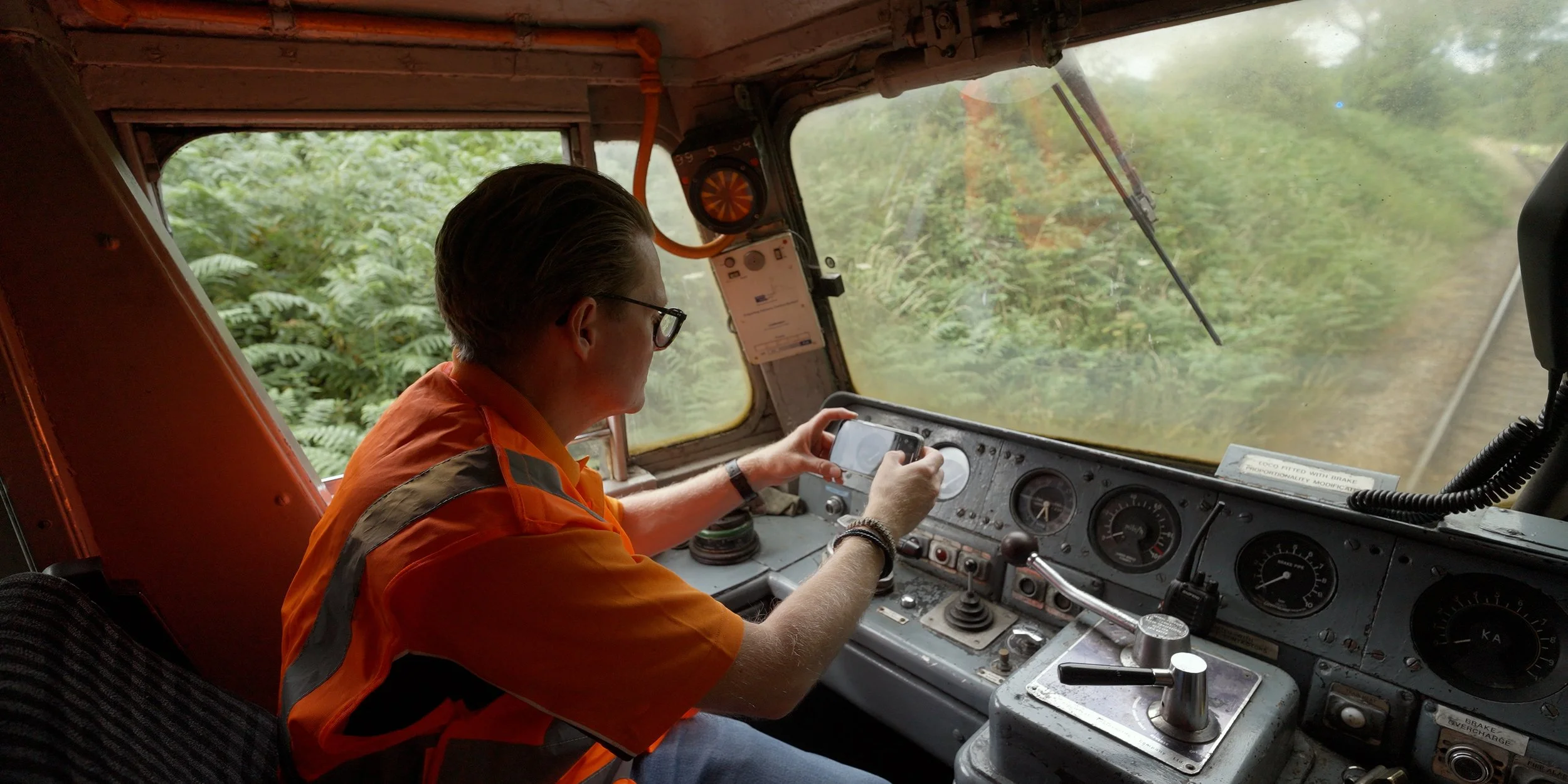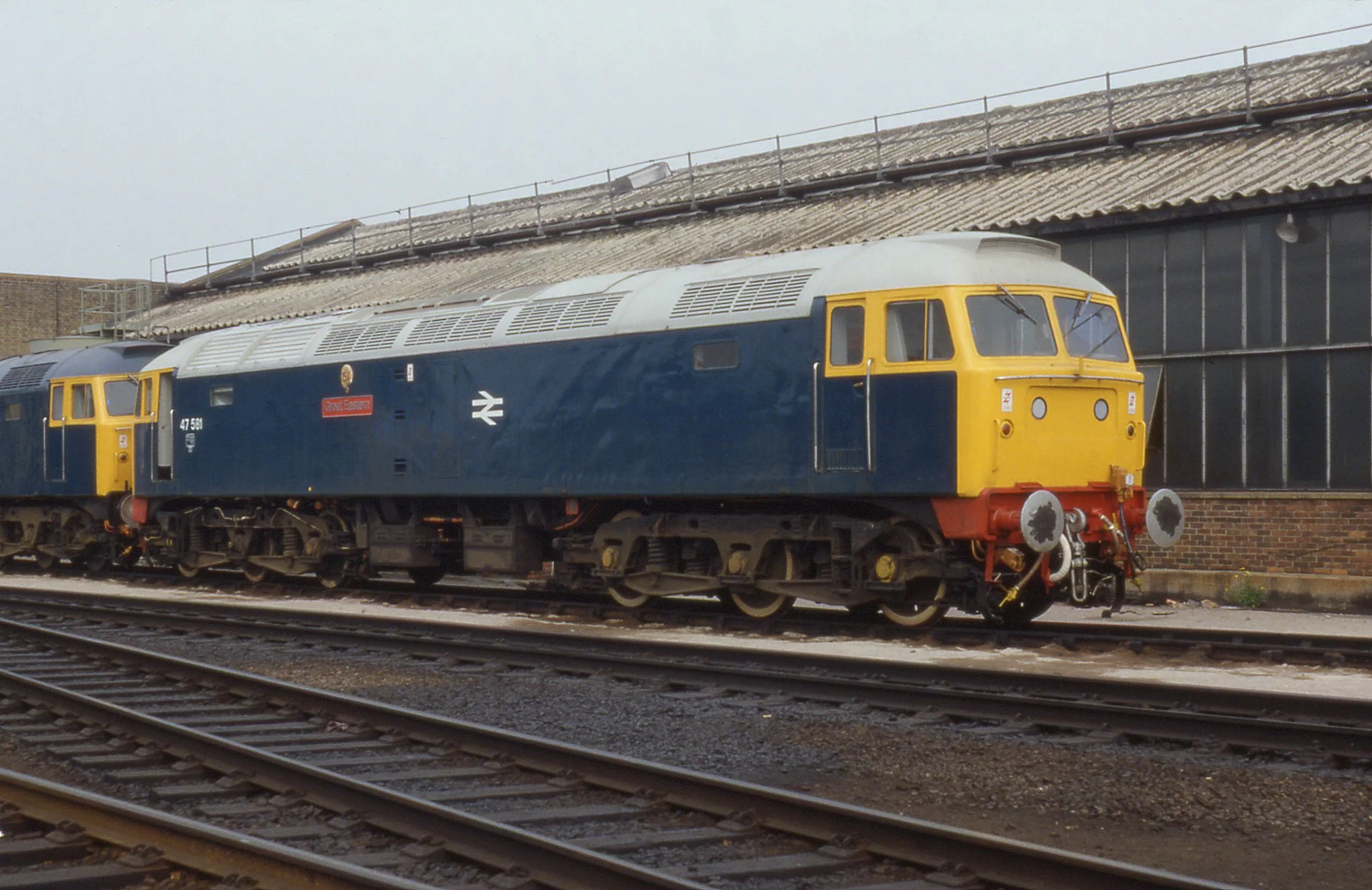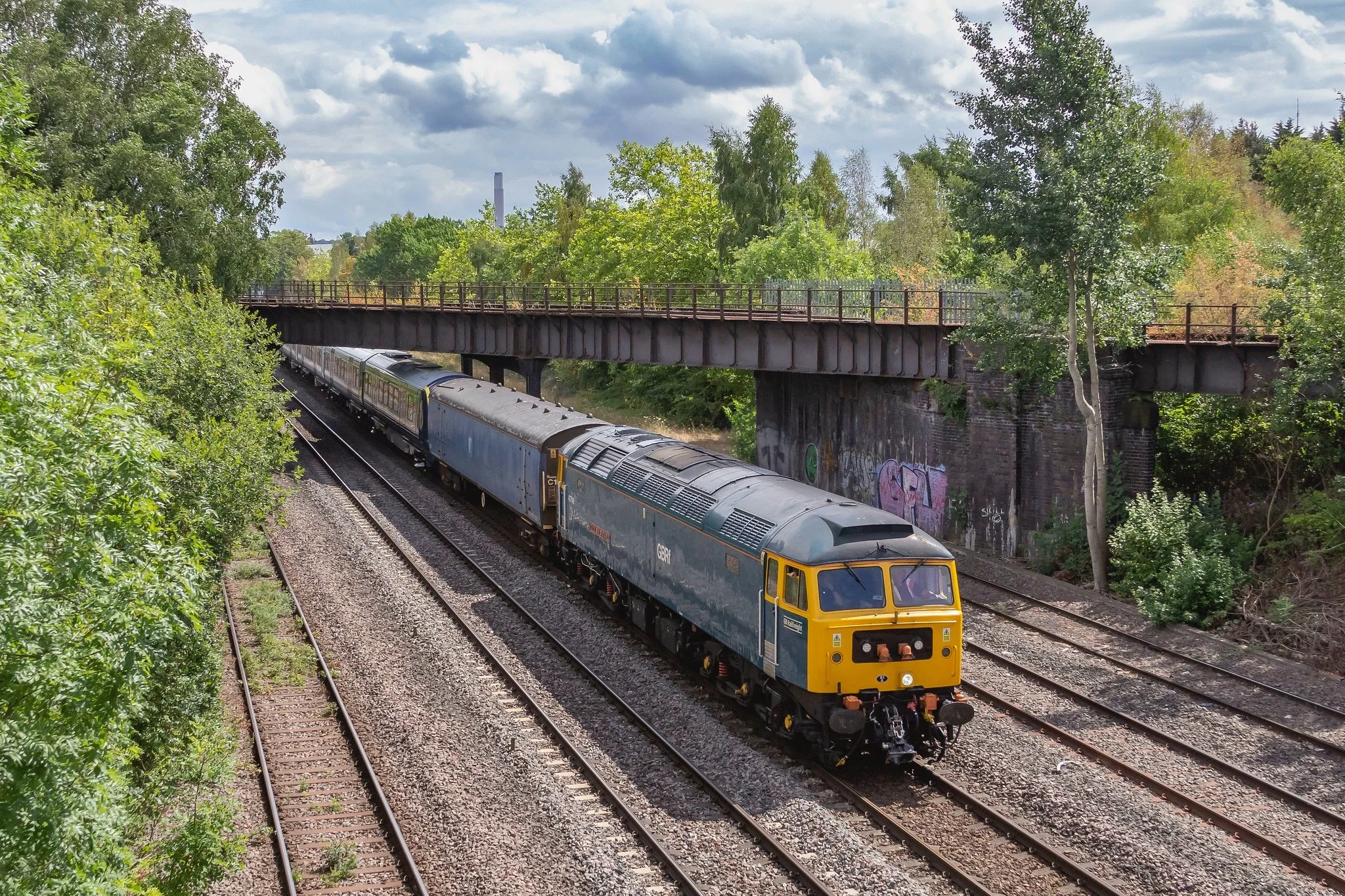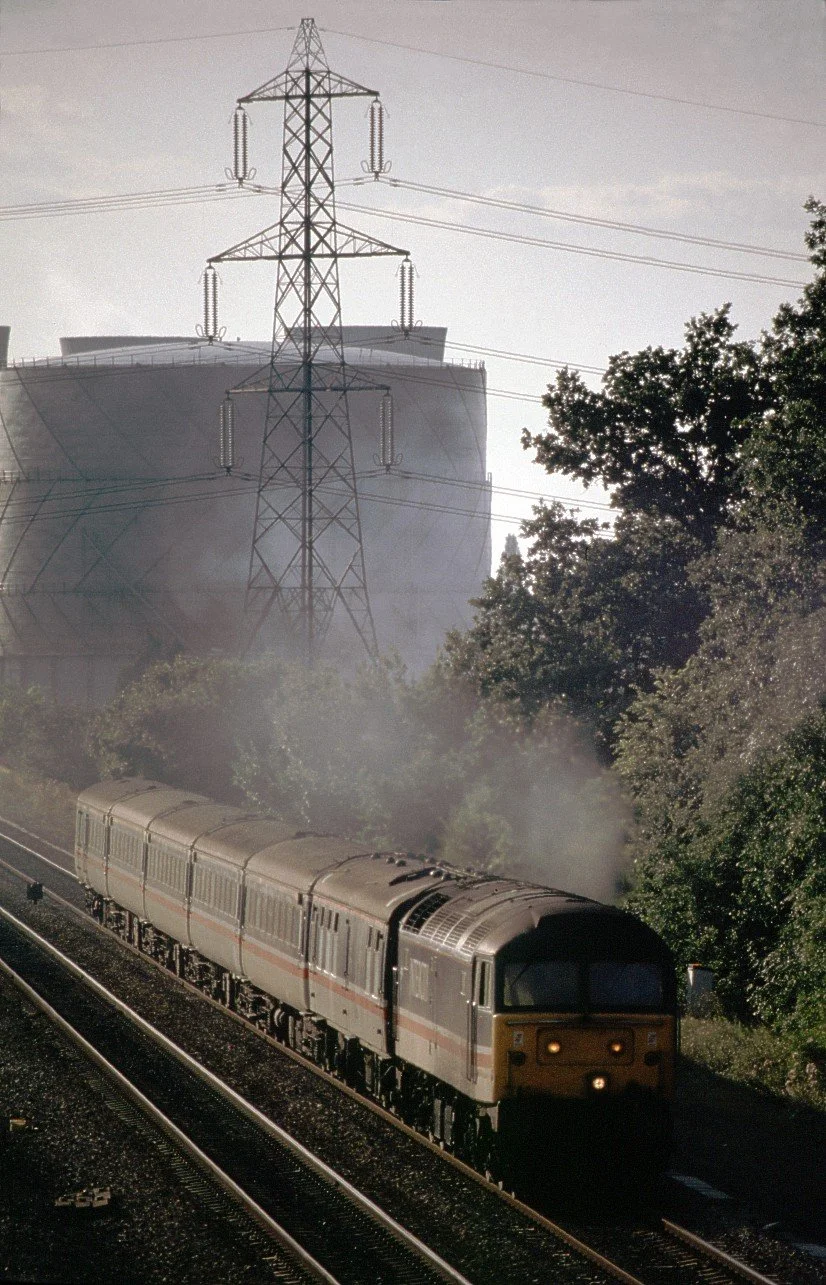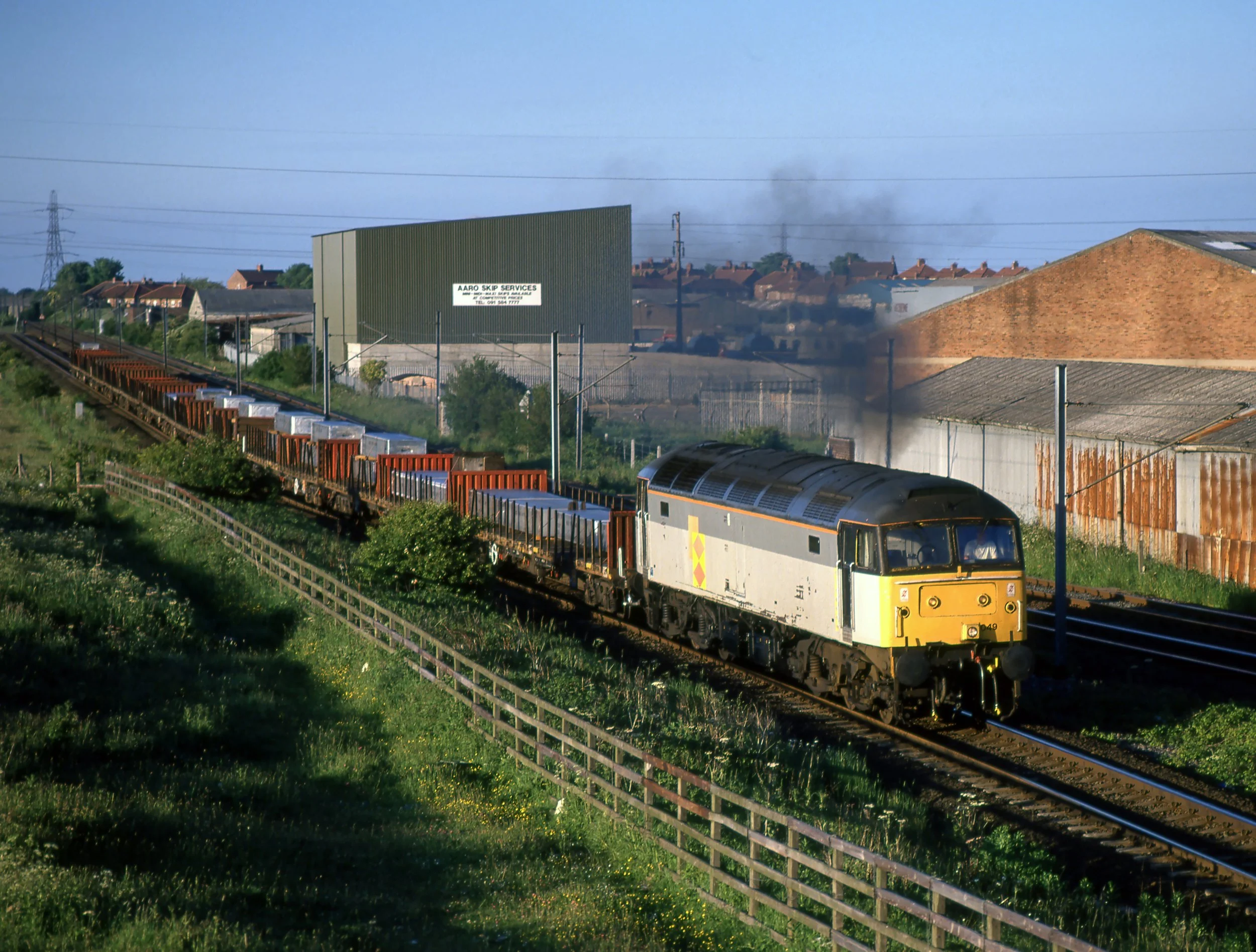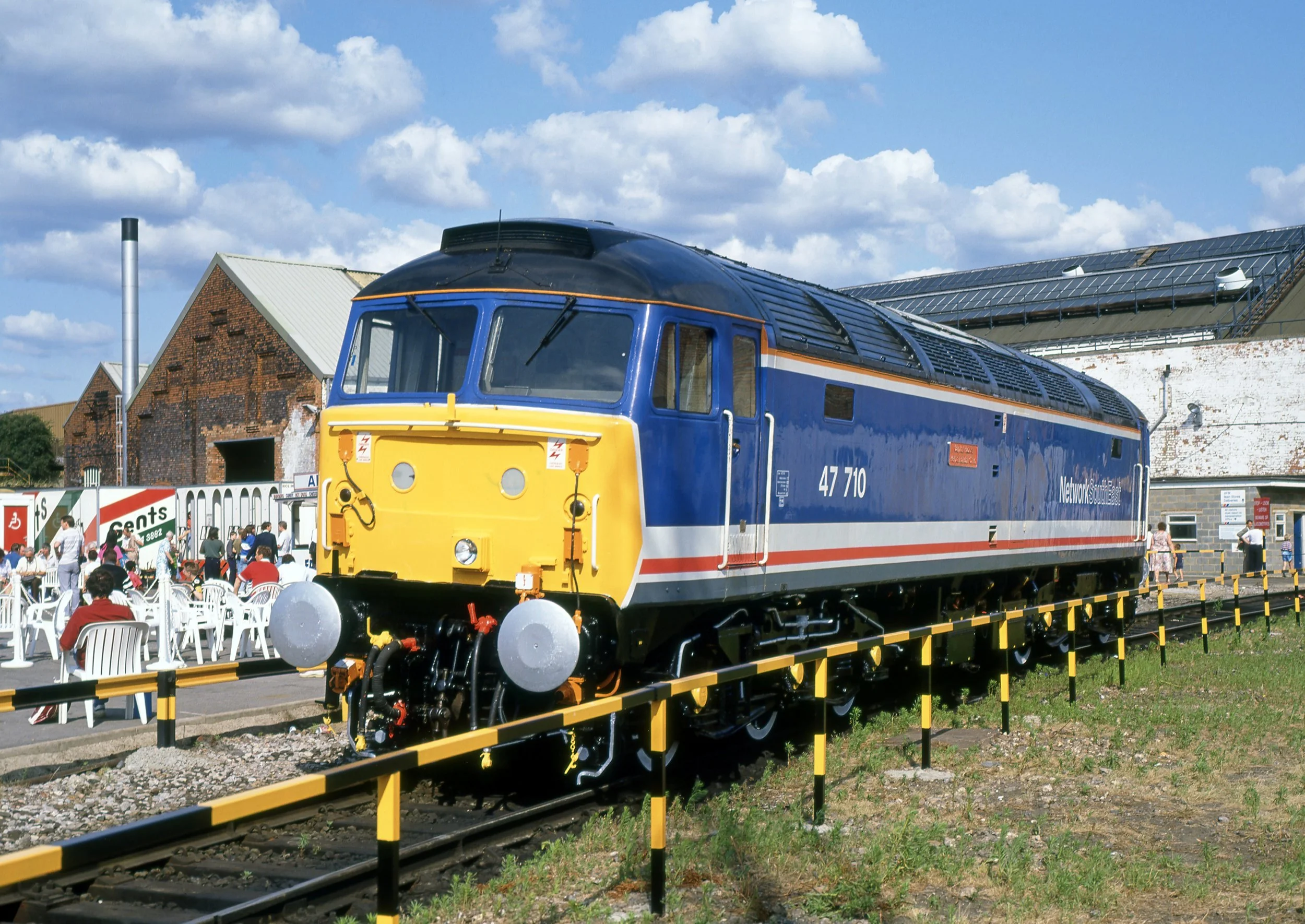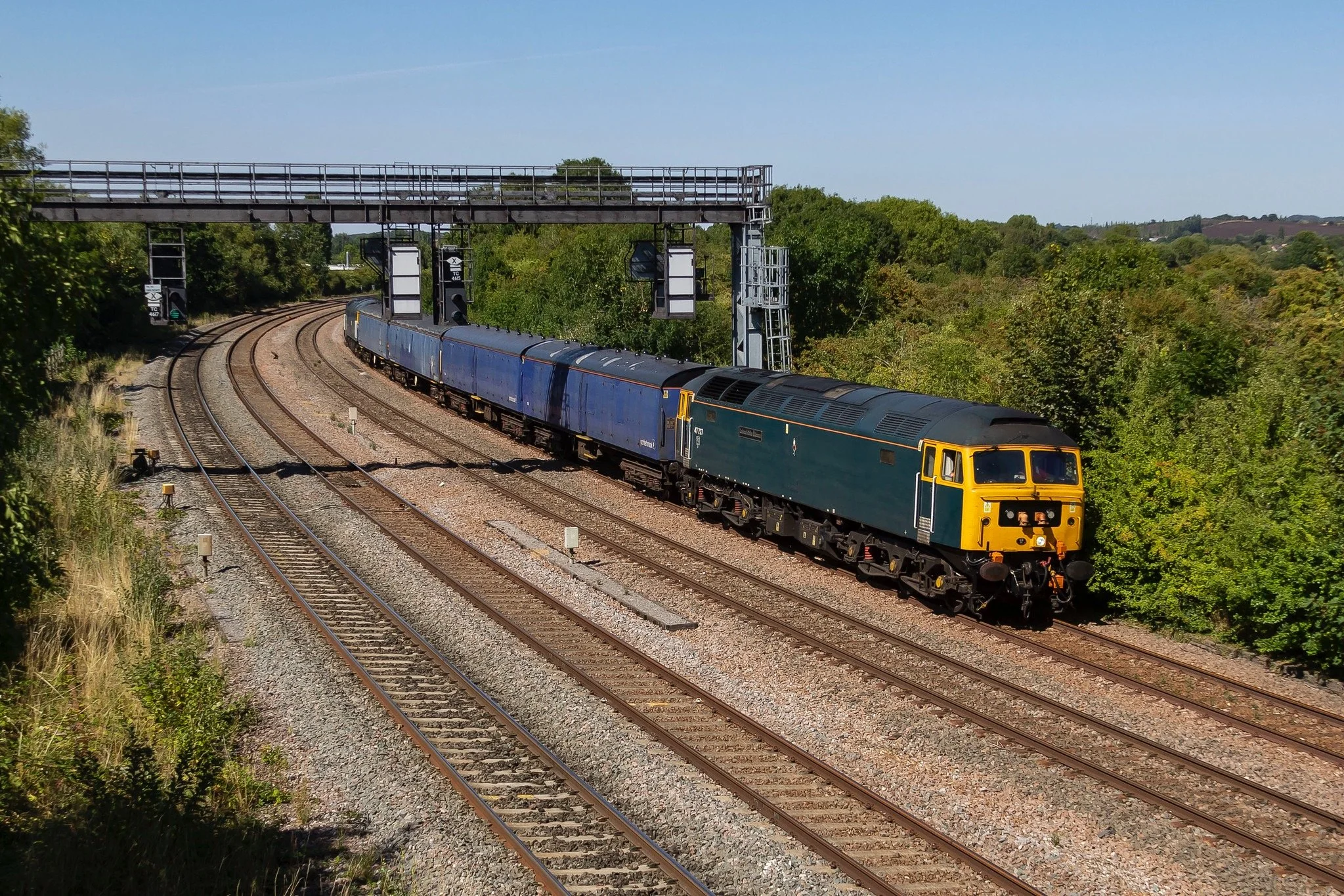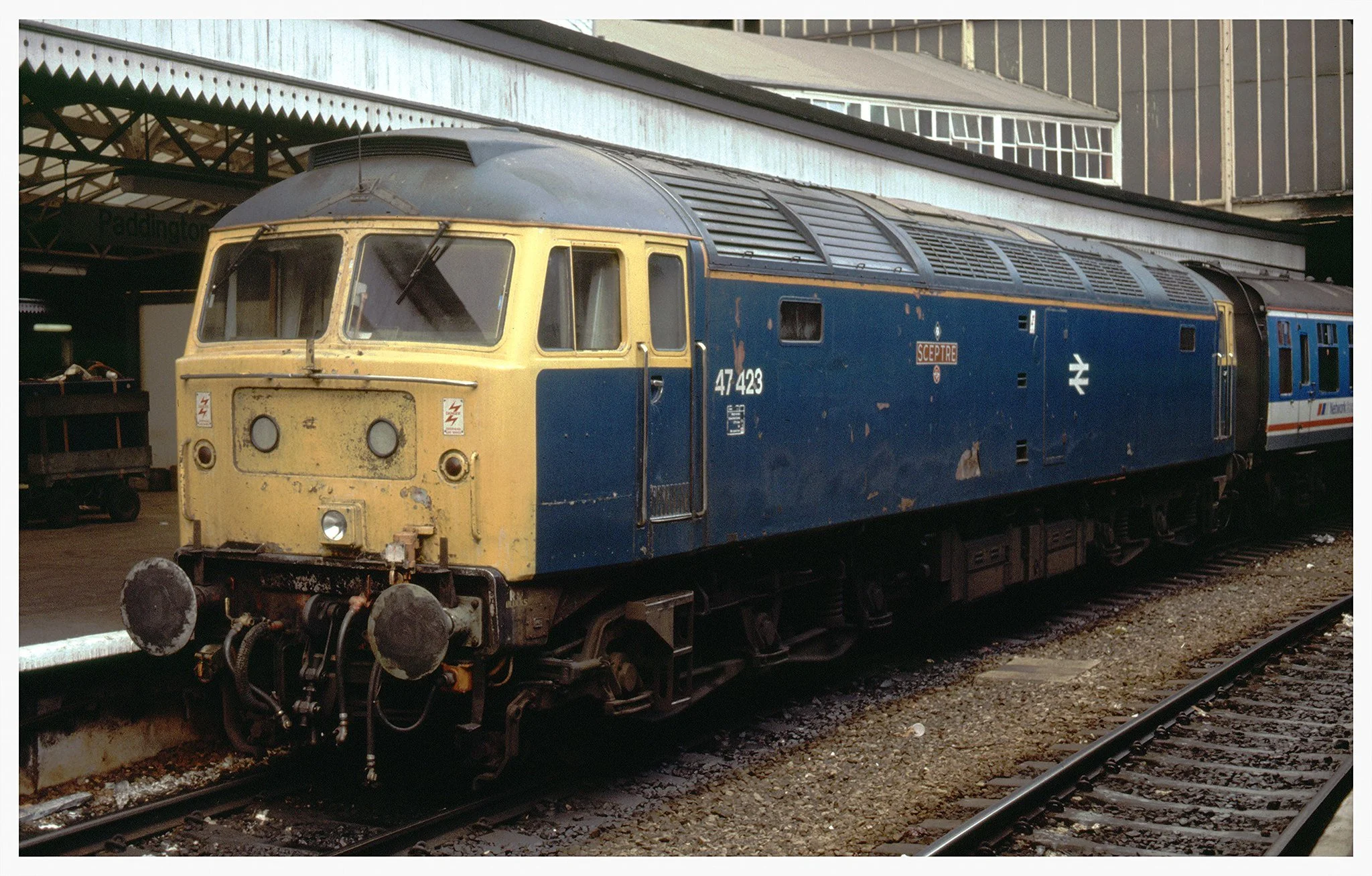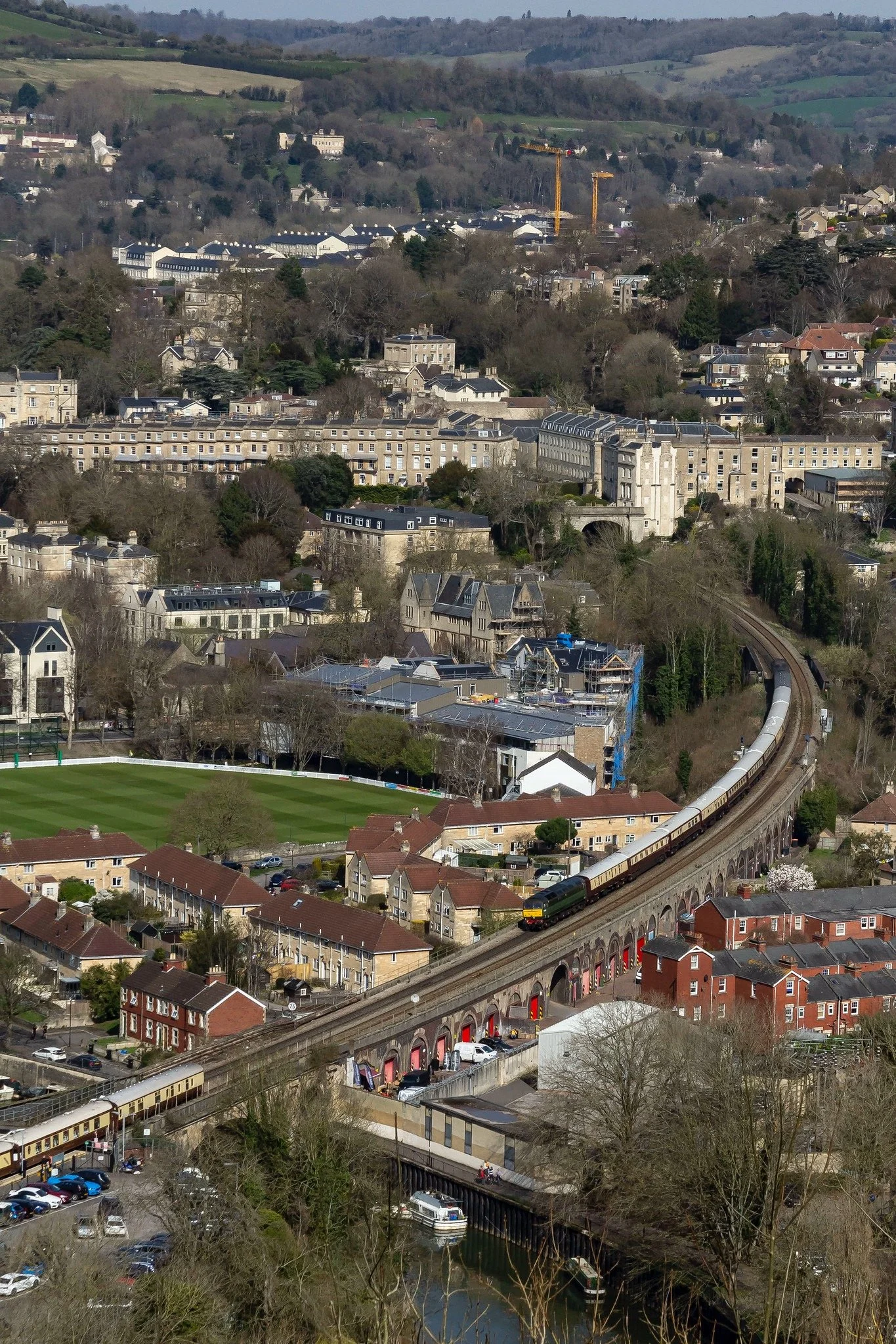Cavalex Class 47 launch
From Type 5, to Type 4; Cavalex Models continues to expand its Brush offering in 4mm
Cavalex Models are pleased to reveal our next locomotive project, the Class 47 in OO scale. With the Class 60s arriving into stock a few weeks ago, and ahead of the greatest gathering this weekend, we feel the time is right to showcase what we have been working on in the background for a number years - the jewel in the crown of the Brush Trilogy!
Following the same approach as taken with our first two locomotive projects, the Cavalex Brush 4 has been designed completely from scratch. Using original works drawings and extensive surveys of multiple locomotives, the design incorporates a comprehensive tooling suite.
As with all of our models, the Class 47 has taken years of significant research and development time, which we believe has been well worth it to capture all of the features of this iconic modern type 4 locomotive. Our extensive tooling suite allows us to accurately cater for the numerous detail differences and cosmetic changes over the life of this multi-purpose Class of locomotive.
We have learnt a significant amount from the Class 56 & 60 projects which utilised adaptive tooling and other innovations. In conjunction with our tooling suite, this will enable us to cover the locomotives from first introduction in service right up to the current day examples that are still working on the network.
The model is already significantly advanced and at the tooling stage following the research and development stage - we are looking forward to showing off a full 3D print of our design at The Greatest Gathering this coming weekend! The RRP of the Cavalex Class 47 is TBA and we will have more information on the sound fitted models in due course, with an expected delivery date of Q1 2027.
We would like to take this opportunity to extend our thanks to Wabtec, The Watercress Line and GB Railfreight for their significant help in allowing us to faithfully recreate this iconic Type 4 locomotive.
Watch the full Class 47 launch video here:
A selection of the images from the launch video can be seen below:
We would like to extend our thanks to Oliver Loom for joining us at the Watercress Line to help launch our Class 47 project, and to Richard Bentley and the Watercress Line for allowing us access to their Class 47, as well as their help and time with the day of filming for the Class 47 launch.
The Class 47 Prototype
British Rail’s most commonly produced mainline diesel locomotive - Photo courtesy Brian Daniels
The ubiquitous and iconic Class 47 locomotive has proven to be of the most versatile diesel-electric locomotives in British Rail’s history, with over 500 units being built between 1962 and 1968.
In the early 1960s under the Modernisation plan, The British Transport Commission started looking for a standard type of diesel-electric locomotive as part of their plans to replace steam traction by 1972, this was actually achieved by 1968.
Photographer Keith Holt, copyright Alistair Holt/KDH Archive
The outline specification for the second generation of the Type 4 diesel-electric locomotives was for a new BR standard type to be of around 2,700hp and a fleet of around 500 or more locos was approved by The BTC in 1960. The new locomotive design was to be capable of hauling express passenger services or freight trains with an improved performance and efficiency.
A competitive tender with the new specification was put out in May 1960 with several manufacturers submitting bids which included names already experienced and synonymous with building locomotives including English Electric and Brush. A consortium of the Birmingham Railway Carriage and Wagon Company, Associated Electrical Industries and Sulzer also submitted a bid as well as The North British Locomotive Company Ltd.
Photo courtesy Gray Callaway - https://flic.kr/ps/wtYno
Early in 1961, The BTC took the decision to cancel the remaining twenty (20) of the last Peak locomotives (Class 46) that were due to be built at Derby, and instead ordered 20 of the new Type 4 specification diesel locomotives. Late February 1961 Brush was awarded the contract to build the first of this new design of locomotives.
The plan had always been to build some of the new Type 4 locomotives at British Rail work shops and Crewe was the site chosen for this.
Over the ensuing years orders were placed with Brush for several batches which saw a total of 512 examples built between 1962 and 1968. This work was shared between Brush works and British Rail’s Crewe works with Brush supplying the equipment to enable BR to build the locomotives at their site.
In total Brush built 310 locomotives with Crewe works building 202 locos.
The development of the Class 47
Photo courtesy Douglas Johnson
Entry into service
The original 20 locomotives built were to be used on passenger services on the ECML, initially being used on services from London to Leeds, Harrogate and Newcastle. The first loco was numbered D1500 and after some testing runs and after allocation to Finsbury Park depot working its first passenger service on the 8th October 1962.
Photo courtesy Brian Daniels - https://flic.kr/ps/XFuZk
All regions of BR received allocations of the Class with the exception of the Southern Region. As further deliveries took place, the Class started seeing operations on other regions with the Western region having an allocation for use on passenger services from London Paddington to Birmingham. The Midland Region then received allocations with Toton and Crewe - a total of 81 members were built with no train heating equipment, dedicated for freight workings. This fleet entered service in 1964.
The final locomotives to enter service were D1960 and D1961, with these two examples being used for testing of new ETH equipment with D1961 the last to enter service in early 1968.
“The sheer number of liveries worn by the Class 47 is staggering over its lifetime, from two-tone green, Corporate blue of British Rail, InterCity Executive, Trainload Freight sector, through privatisation to the current day of West Coast and GB Railfreight.”
Photo courtesy Brian Daniels - https://flic.kr/ps/XFuZk
Modifications during the build process
During the six years that it took to complete the construction of the fleet of over 500 examples, a number of changes and modifications were undertaken after the first twenty were built. These included:
ETH generator removal
It was only the first twenty locomotives that were fitted with electric train heating equipment, (ETH Generators), the remainder having steam boilers or not having any heating equipment. Later on, a conversion programme was undertaken to refurbish and fit a sub-class capable of hauling the at the time new fleet of electrically-heated rolling stock. These examples were known as Class 47/4s.
Universal boiler compartment
Introduction of the universal boiler compartment. Steam heating equipment was fitted using three different makes across the build, Spanner, Stone-Vapor and Clayton. Depending on allocation and region would determine which make of steam heating was installed.
Radiator grille design changed
The Radiator grilles were changed from fixed position grilles to two thermostatically driven grilles controlled by the engine room temperature. As the temperature in the engine room increases, the grilles open and then as the temperature falls, the grilles then return to their closed position.
Photo courtesy Jo Alder
Brake equipment changes
The first 20 Class 47s were delivered with Westinghouse brake equipment unlike the rest of fleet which were fitted with Davies and Metcalfe brake equipment.
Air brakes fitted
Air braked - train air brake equipment was installed to allow haulage of the new Freightliner traffic which was governed by the introduction of new air brake fitted wagons. The fleet started as a vacuum braked locomotive before seeing train air brake equipment fitted with many members becoming dual braked.
Merry-Go-Round coal traffic
The Class 47 was the chosen locomotive class selected to work the forthcoming Merry-Go-Round trains which were to move coal from colliery to power station. Using specially developed equipment to allow the loading and unloading of coal at a speed of no more than 0.5mph.
Teething troubles occurred in the early days with the equipment but further development saw this settle down with more input from the driver.
Class 48s
Between 1965 and 1966, after being approached by Brush, British Rail agreed to test a new 2,650hp engine in five Class 47s to evaluate the engine in service. D1702 to D1706 were released from Brush and allocated to Tinsley depot for trials. These Class members were known as Class 48s.
Several years later following a number of teething and technical issues, the decision was taken to convert the locomotives to Class 47 specification between November 1970 and April 1971.
Photo courtesy Gray Callaway - https://flic.kr/ps/wtYno
TOPS renumbering
With the advent of steam traction having been withdrawn from the network, the D prefix was dropped in 1968 and for the first time the Class could be identified as a Class 47.
The introduction of the Total Operations Processing System (TOPS) computer system saw the Class renumbered to more commonly known 47*** number prefix.
This saw the fleet allocated to sub-classes:
47/0 – Locomotives fitted with steam heating equipment
47/3 – Locomotives built without any train heating equipment
47/4 – Locomotives fitted with electric train heating equipment
47/7s for push pull
As part of the upgraded Edinburgh to Glasgow 12 Class 47s were fitted with push-pull equipment and the addition of jumper cables on the front and reclassified 47/7. The sub-class were to replace the Class 27s which had previously been used on these services in top and tail formation.
Four more examples were converted between 1984 and 1985 when the push-pull services were extended to cover services from Edinburgh and Glasgow to Aberdeen, bringing the total sub-class to 16. Following fire damage to 47713, a further Class member was converted for push-pull and released in 1988 as 47717.
Photo courtesy Douglas Johnson - https://flic.kr/ps/2WtyKg
47601 and 47901
The oil crisis of the early 1970s caused major concern over the country’s reliance on oil as the main source of fuel for the CEGB. What followed was a swift change of policy towards coal with this fuel source viewed as the priority especially as supplies were readily available in the country to allow switching CEGB sourcing as soon as practically possible.
The switch to coal would entail an increase in block train coal traffic for British Railways. The existing traction in the form of Class 47s had suffered a spate of main generator failures due to their heavy workload since introduction of the Merry-Go-Round workings had started in the 1960s. The MGR workings had to be reduced from 34 to 30 wagons following the main generator failures which meant that longer trains would not be an option in the current crisis. With no spare capacity within the Class 47 fleet British Rail was faced with having to build a fleet of new locomotives as the only solution.
In 1974 British Rail started a tender process for the new locomotive which resulted in the development of the Class 56.
47046 was selected as a test bed locomotive and fitted with a GEC 16RK3CT engine and in January 1976 left Crew Works after extensive modification and renumbered 47601. This loco saw service working MGR traffic in South Yorkshire.
1979 saw this particular loco return to Crewe Works to undergo further modification with the swapping out of its existing engine to be replaced with the GEC 12RK3ACT engine for evaluation as the test bed for the forthcoming Class 58 programme. Released in 1980 having been renumbered to 47901, it was allocated to the Western Region initially for use on freight services out of Cardiff Canton depot followed by testing on the heavy stone trains out of the Mendip quarries.
Photo courtesy Douglas Johnson - https://flic.kr/ps/2WtyKg
47/8s - Long range fuel tanks fitted
The 850gallon fuel tanks fitted as new meant that their limited fuel capacity introduced the practice of changing locos on some of the longer Inter-City cross-country workings.
1989 saw the start of a programme to modify a sub-class to increase fuel tank capacity to 1,295 gallons for use on InterCity services as long-range locomotives to offer increased efficiency with longer distance workings. As part of the 47/4 conversion programme which was completed in 1987 with the release of 47665 from Crewe Works, the latter 15 examples numbered 47650 to 47665 were fitted with the 1,295 gallon long-range fuel tanks.
A further 34 examples were fitted with long-range fuel tanks and used on InterCity cross-country services right up until the Class 47s were withdrawn from these workings in August 2002.
Photo courtesy Douglas Johnson - https://flic.kr/ps/2WtyKg
Photo courtesy Mick Page - https://flic.kr/ps/2bzadi
RES – Parcels 47/7 conversion
Another significant change for the Class 47s came in 1994 when additional 47/4s were fitted with long-range fuel tanks and equipment to allow the class to work with a new type of rolling stock vehicle known as Propelling Control Vehicles (PCV).
In the early 1990s, Royal Mail undertook a reorganisation of its postal distribution network which resulted in the closure of station facilities and the loading of mail on trains across the network, to larger sorting facilities. The knock-on effect was that the majority of mail and parcels would be removed from normal passenger services, something that had been the norm for decades.
Opening a new terminal at Willesden, just north of London on the WCML and investing in a new fleet of Class 325 EMUs for the bulk of the mail from Scotland and the North-East, there was still a large proportion of the country that would not be served. These areas would be served by dedicated loco hauled workings to terminals across the network.
Photo courtesy Jo Alder
To improve efficiency and overcome the problems associated with terminals not possessing the facilities to run round the stock, the Propelling Control Vehicles (PCV) were introduced.
These vehicles were converted from redundant Class 307 EMU driving trailer coaches to allow the PCV driver, the PCV vehicles were at the back of the train, could be used to control the brake and also to provide a signal to the driver as to how much power he should provide during the move.
This innovative solution to operation proved highly successful but unfortunately was short lived as EWS lost the mail contract in 2004 which shortly after saw the withdrawal of the PCVs in 2005.
Photo courtesy Gray Callaway - https://flic.kr/ps/wtYno
For more than six decades the Class 47 has been plying its trade across the country. From the Western Region and Wales, The Southern Region, Eastern Region, Midland Region, right up into Scotland – these locomotives could be seen working a variety of traffic from express passenger to mixed freight. There is no doubting that the Class 47 has played a crucial role in shaping Britain’s railway landscape over the decades making it a reliable workhorse for the British Rail and the post-privatisation network.
A true legend.
Photo courtesy Jo Alder
Project research & Survey(s)
During the research phase of the project we have had two sources of information; detailed original works drawings courtesy of Wabtec UK, and a detailed research file compiled following a trip to UKRL’s Leicester depot to survey GB Railfreight’s 47739.
These two sources of information, plus a vast catalogue of material, photographs and data collated from numerous Class 47s - sourced from several third parties, has provided us with a wealth of information to produce the CAD of the model.
As you can see from the photos above, an extensive and comprehensive survey was conducted, measurements taken, photos captured and detailed diagrams were drawn.
A selection of our favourite detailed research shots from the research and survey stage of the process can be seen below:
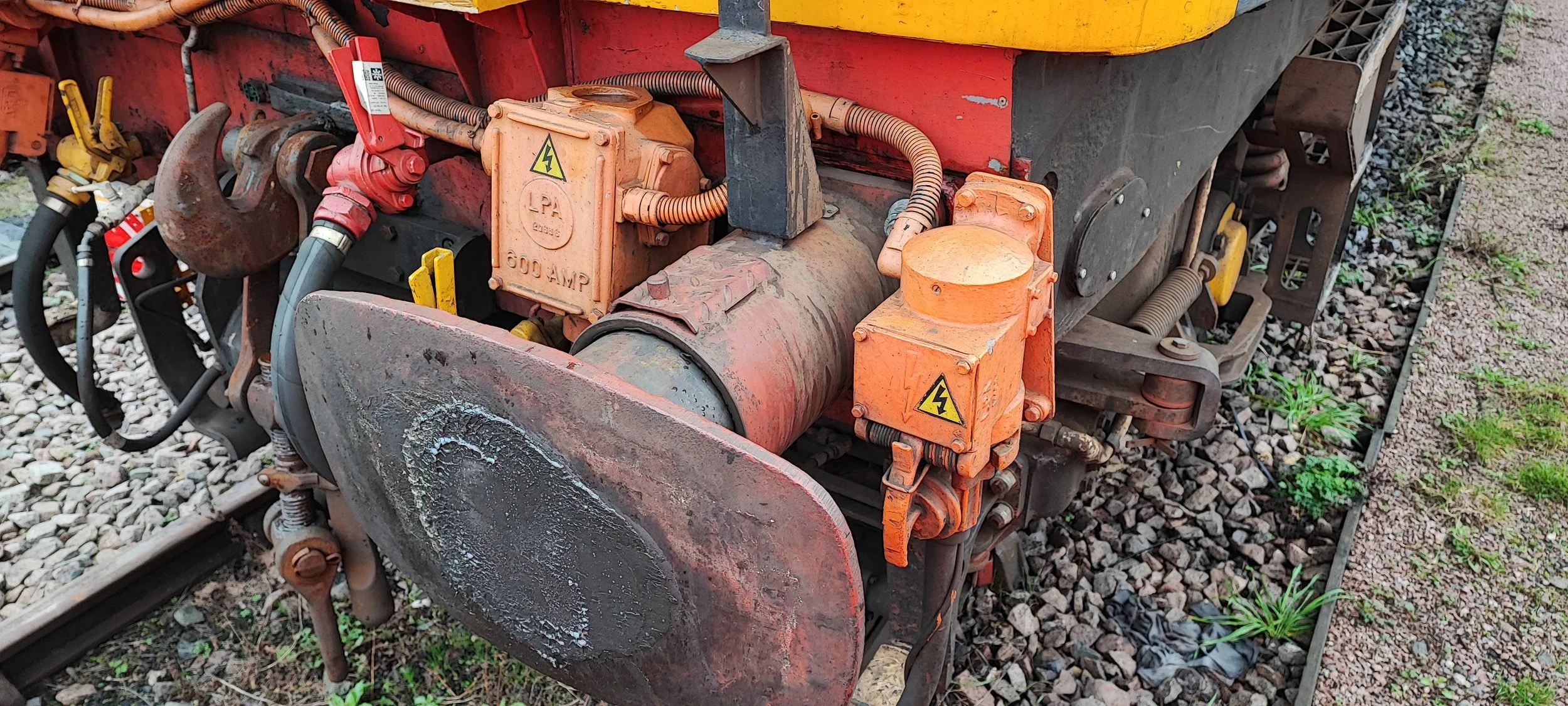



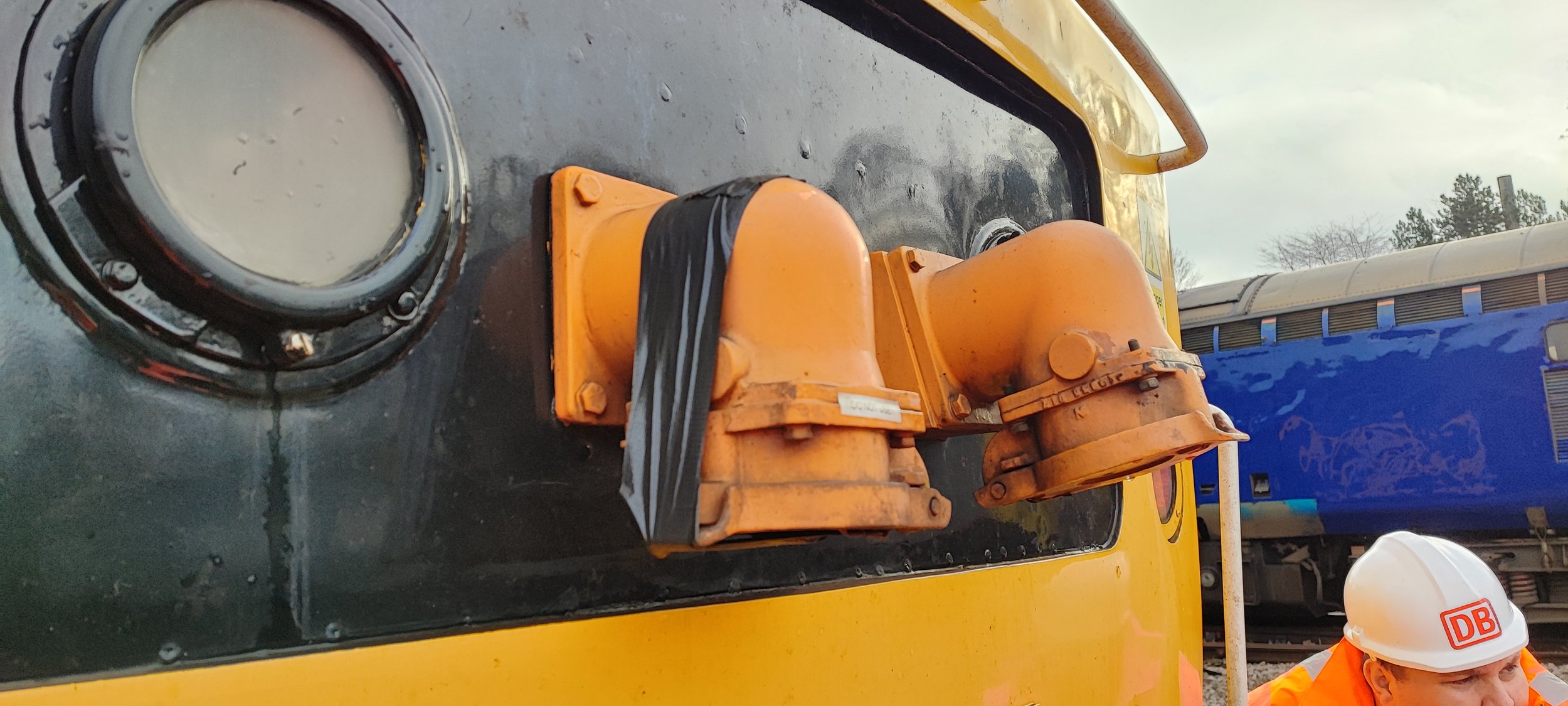



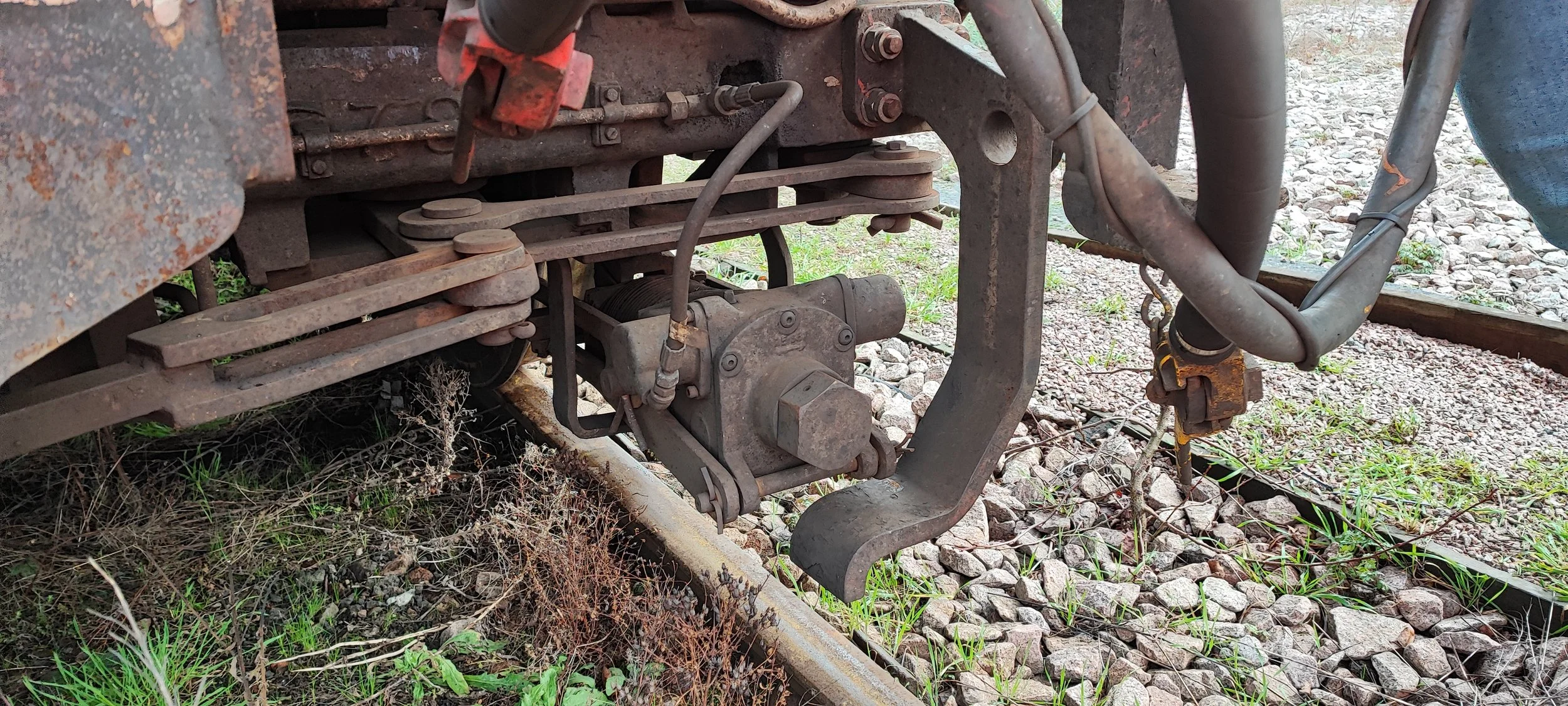
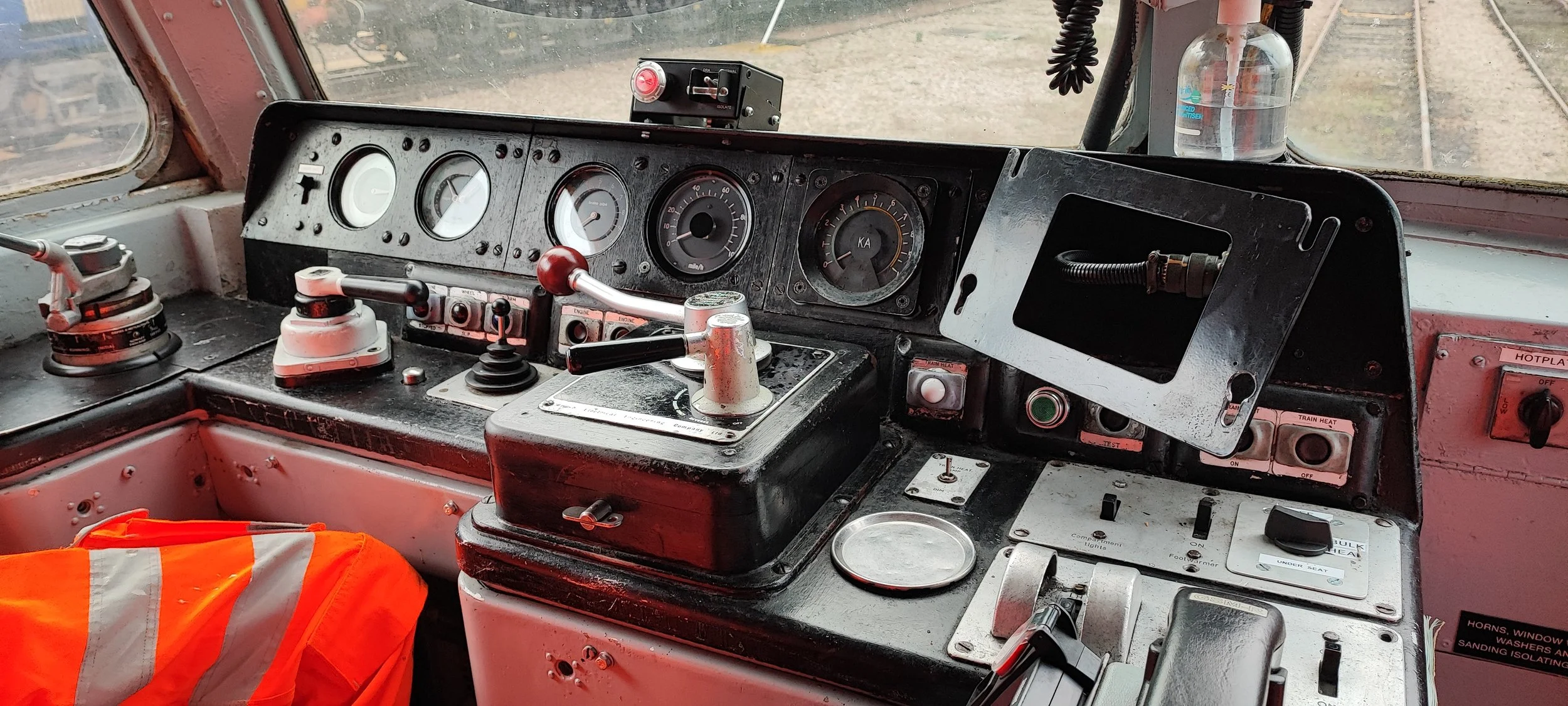





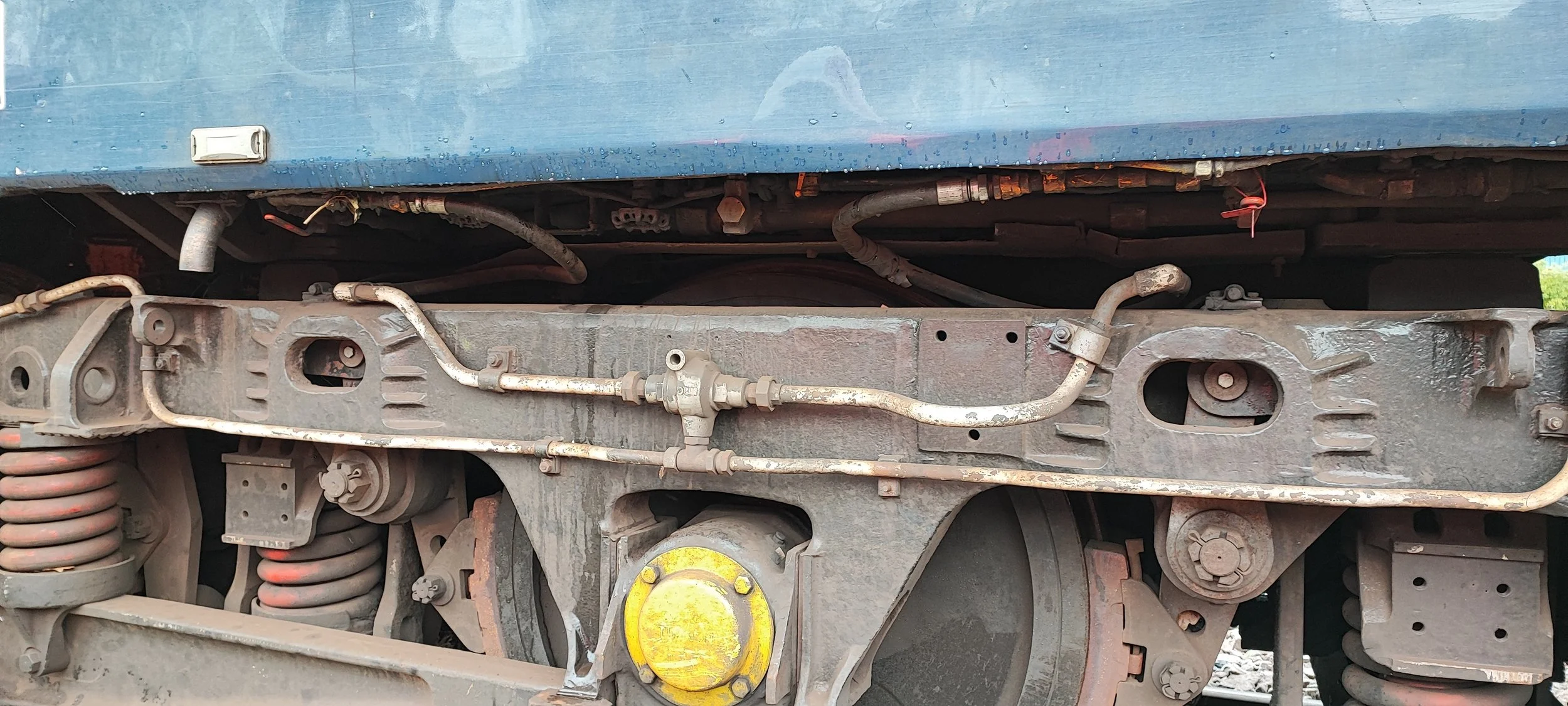
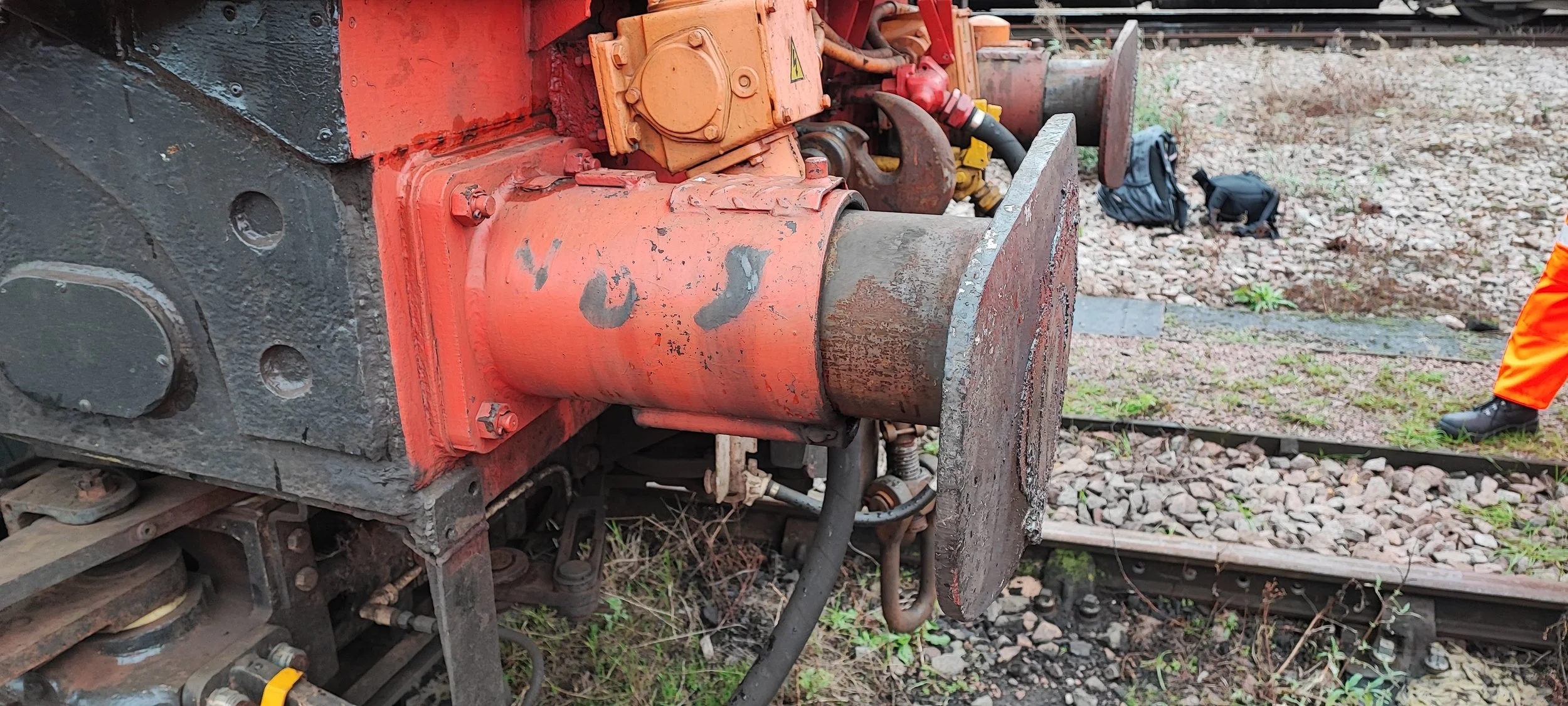

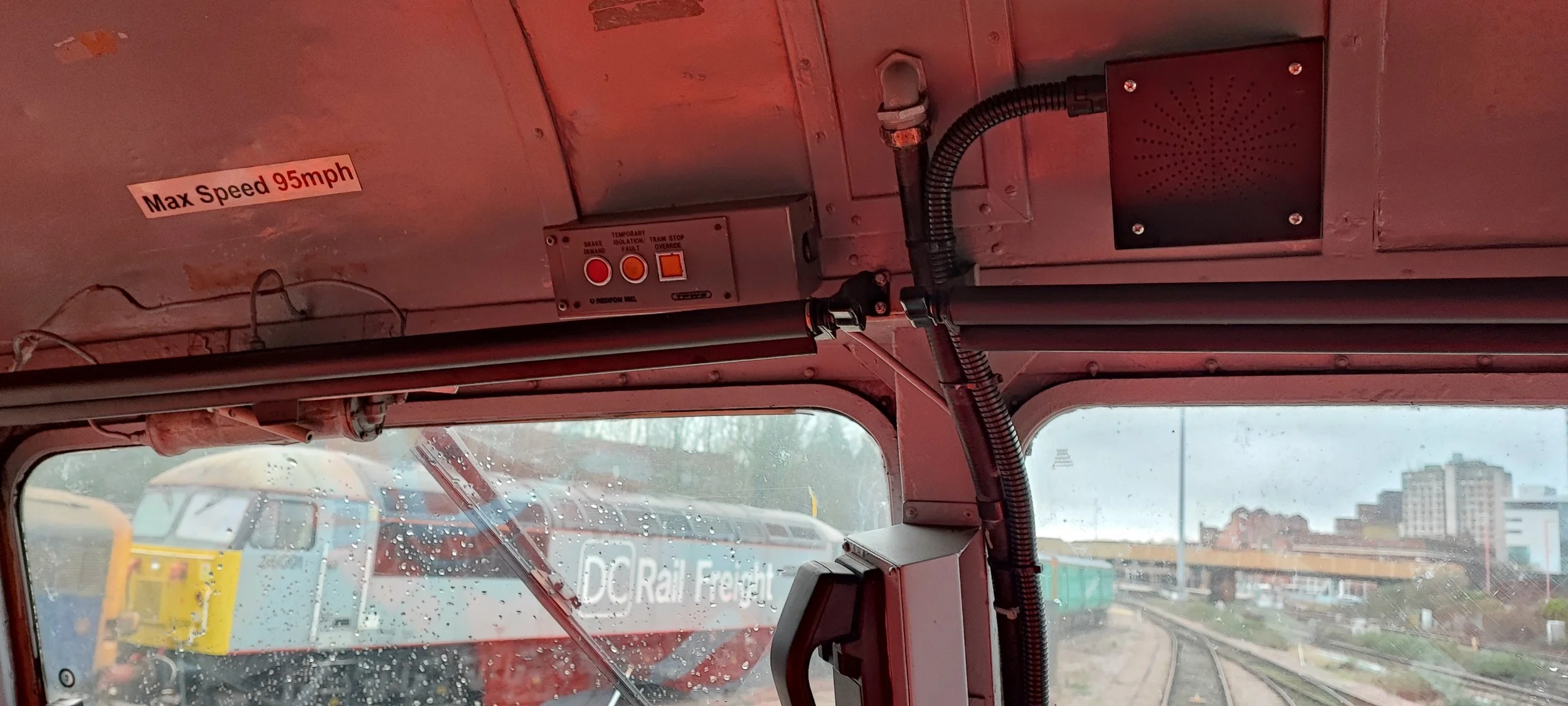

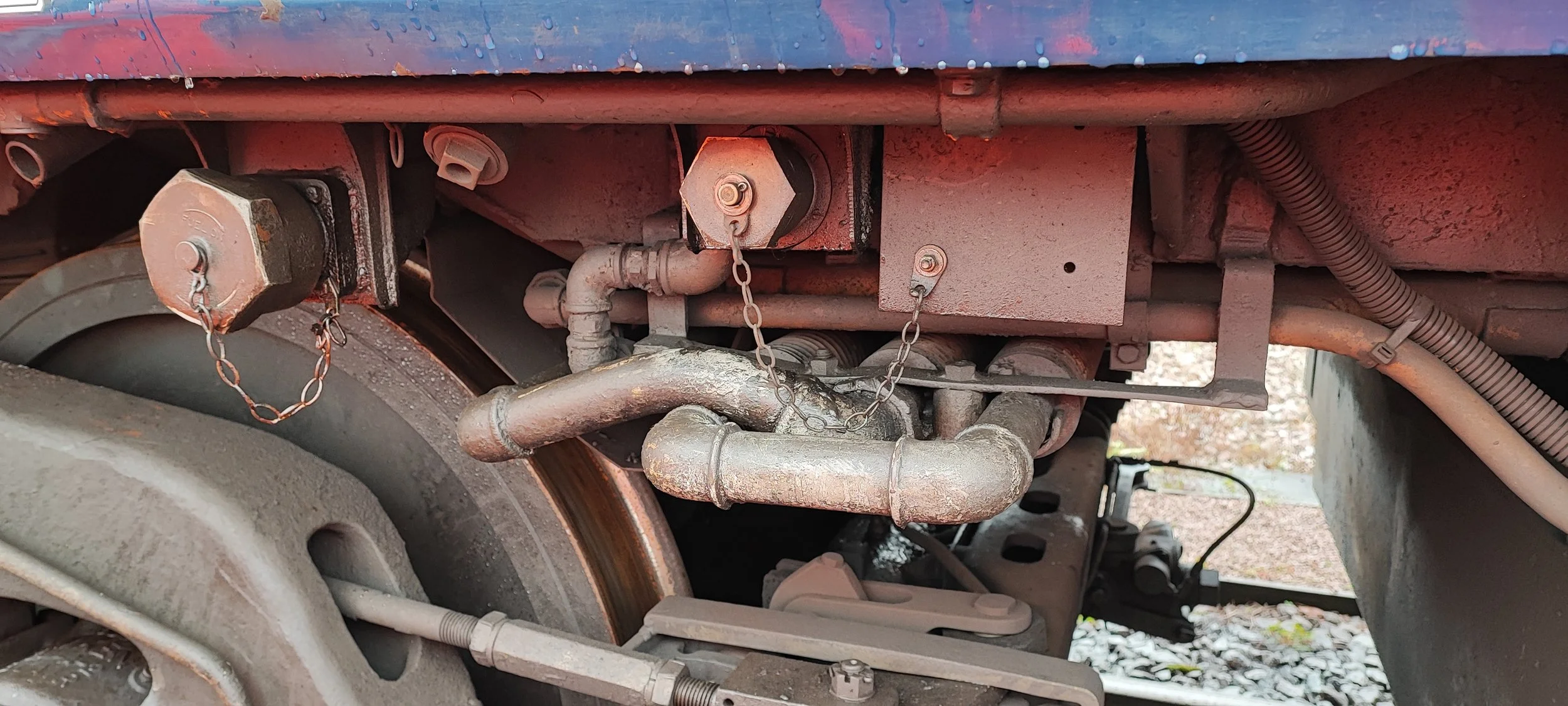
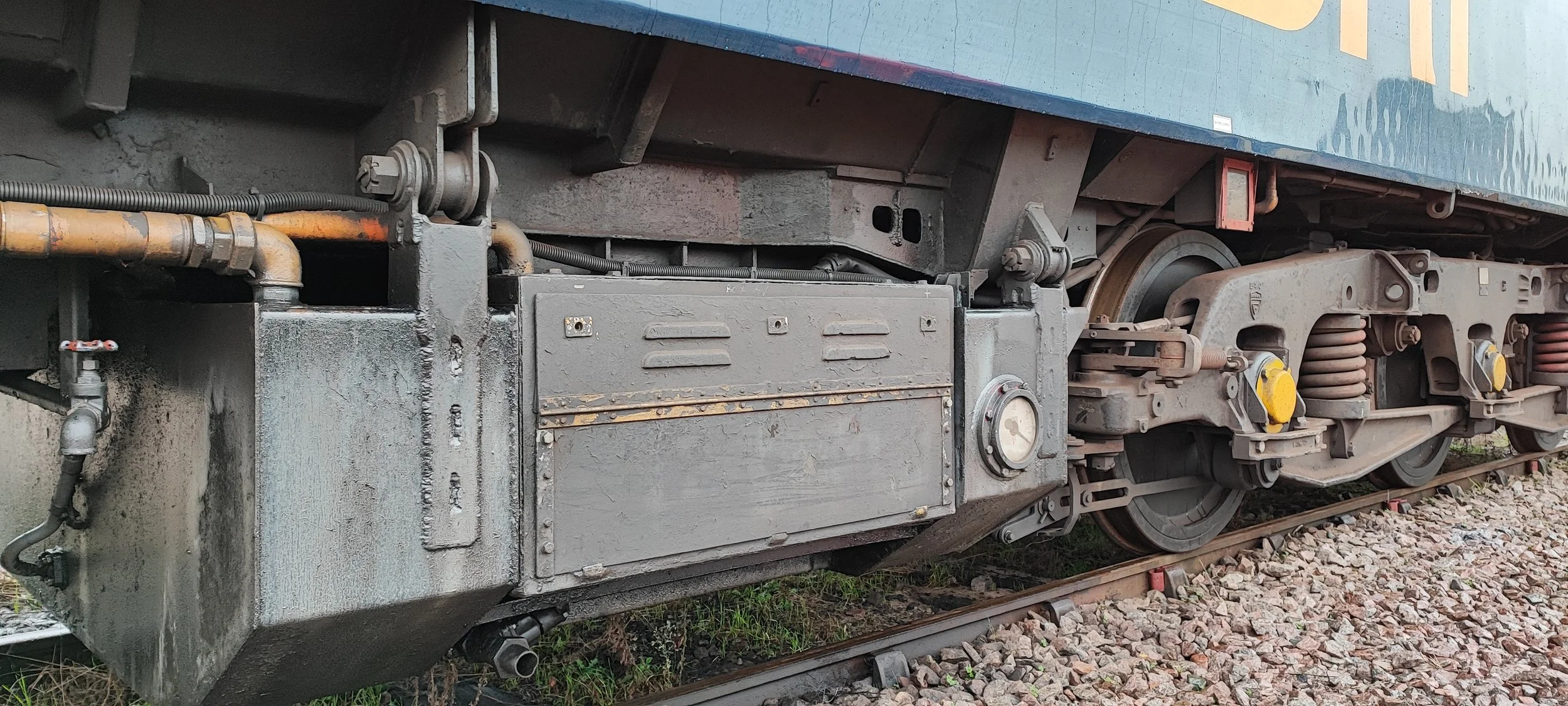

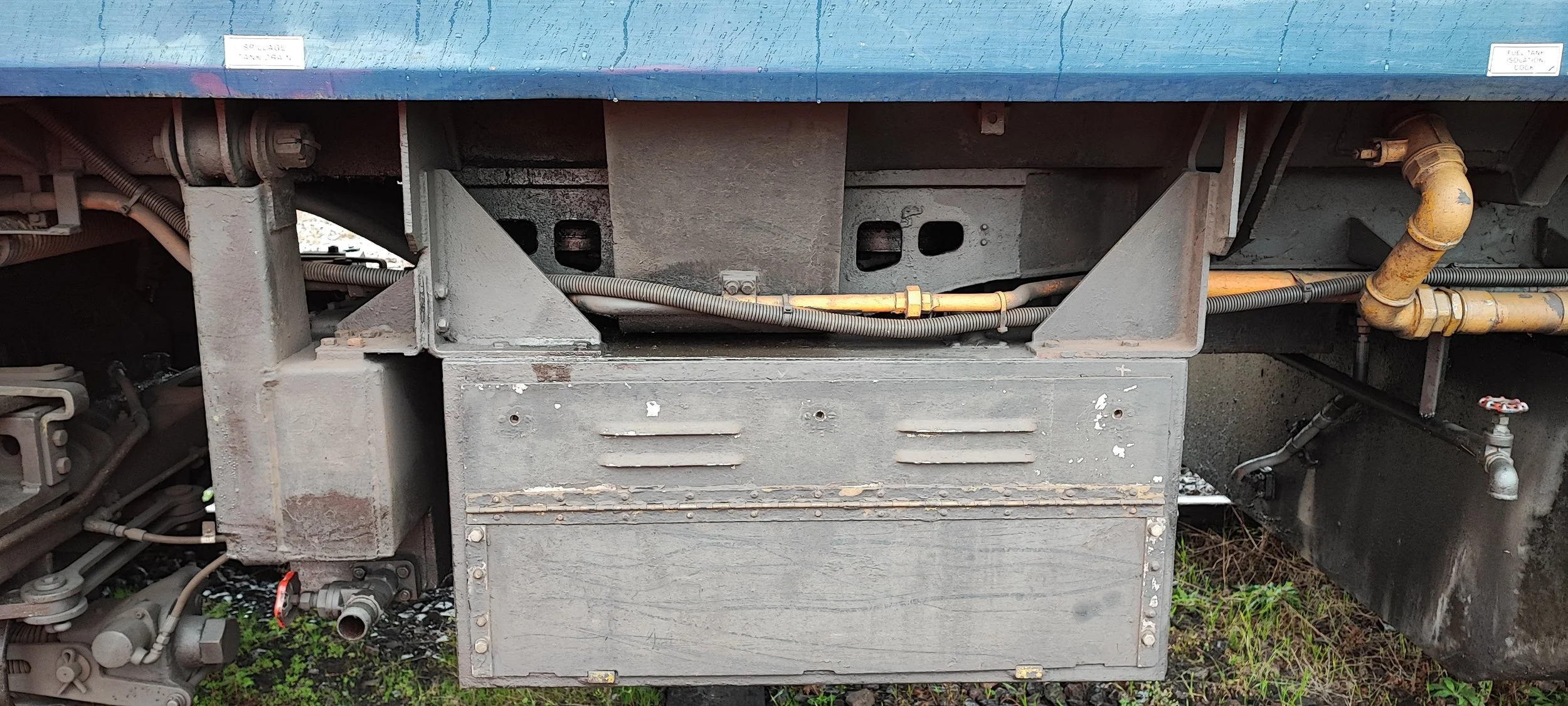


We would like to extend a huge thank you to the UKRL team at Leicester and GB Railfreight, for their help in allowing us to look over 47739 and The Watercress Line for giving us access to 47579. In addition, our thanks also to a number of individuals behind the scenes that have provide invaluable assistance for which we are extremely grateful.
The Model
THE CAVALEX CLASS 47 SPECIFICATION:
21 pin DCC interface and innovative removable panel to allow for easy DCC chip installation and access to the comprehensive dip switch control for DC users, which allows access to all of the DCC functions for lighting, without the need to remove the model from the track.
Photo etched roof grilles.
A wealth of separately fitted parts across the model, including bogies which aren’t just one piece mouldings to allow for proper detail relief as well as the under frame.
Separately motor operated roof fans via a function output on DCC, or when moving on DC.
Full independently controlled lighting, allowing for parked, yard, light engine, and ‘on train’ modes, with realistic levels of brightness and colour representative of the prototype being modelled. Prototypical lighting configurations including separate headlight operation, and LED tail lights for the modern livery examples as well as engine room lighting independently controllable via DCC functions.
Realistically bright (or dim depending how you look at it) cab lighting, driver’s desk with individually printed dials and decorated full depth cab interior as per the prototype.
Hall sensors for fully adjustable automated flange squeal on sound fitted models. This feature automatically provides the characteristic screech as the wheels enter sharp curves. Not having to activate the sound manually only adds to the immersive effect whilst driving the locomotive.
Power bank providing smooth uninterrupted running, which combined with floating centre axles, allows trouble free road holding and power.
Coreless motor with twin flywheel and low ratio gearbox for prototypical running speeds typical of the class.
Provision to order drop in wheelsets to easily convert the loco to EM and P4 gauges for those modellers that wish to showcase the unparalleled levels of detail and accuracy of the model with equally accurate trackwork.
Highly detailed and accurate underframe with numerous separately fitted parts to recreate all of the tank variants.
Individual details and finish that has been rigorously researched and applied to each model to represent the individual prototype as accurately as possible.
DCC sound with custom ESU project for our factory fitted sound version and stay alive fitted to all models. ESU Passive Radiator Speaker in the chassis as standard for a balanced combination of low and high frequency sounds to accurately reproduce the prototype via a custom recorded sound project.
Etched name plates as appropriate to each model number.
Unique AMD (Adaptive Magnetic Detailing) features to be announced.
The Cavalex Class 47 Range - available from all our retailers listed below
1920 – BR Two Tone Green – (CM - 1920 – T T Green)
47217 – BR Blue - (CM - 47217 – BRB)
47423 – BR Blue - (CM - 47423 - BRB)
47085 - Petroleum - (CM - 47085 - TGP)
47049 - RfD - (CM - 47049-TGRfD)
47482 – Large Logo - (CM - 47482 - LL)
47847 - Swallow - (CM – 47847 – ICS)
47358 – Original Railfreight - (CM - 47358 - OR)
47567 – IC Mainline - (CM - 47567 - ICM)
47716 - ScotRail - (CM - 47716 - SR)
47710 – Revised NSE - (CM - 47710 - RNSE)
47770 - RES - (CM - 47770 - RES)
47460 – Large Logo - (CM - 47460 - LL)
47611 – IC Executive - (CM - 47611 - ICE)
Livery artwork will be shared with customers in due course. A selection of the locomotive specific tooling renders can be seen below:



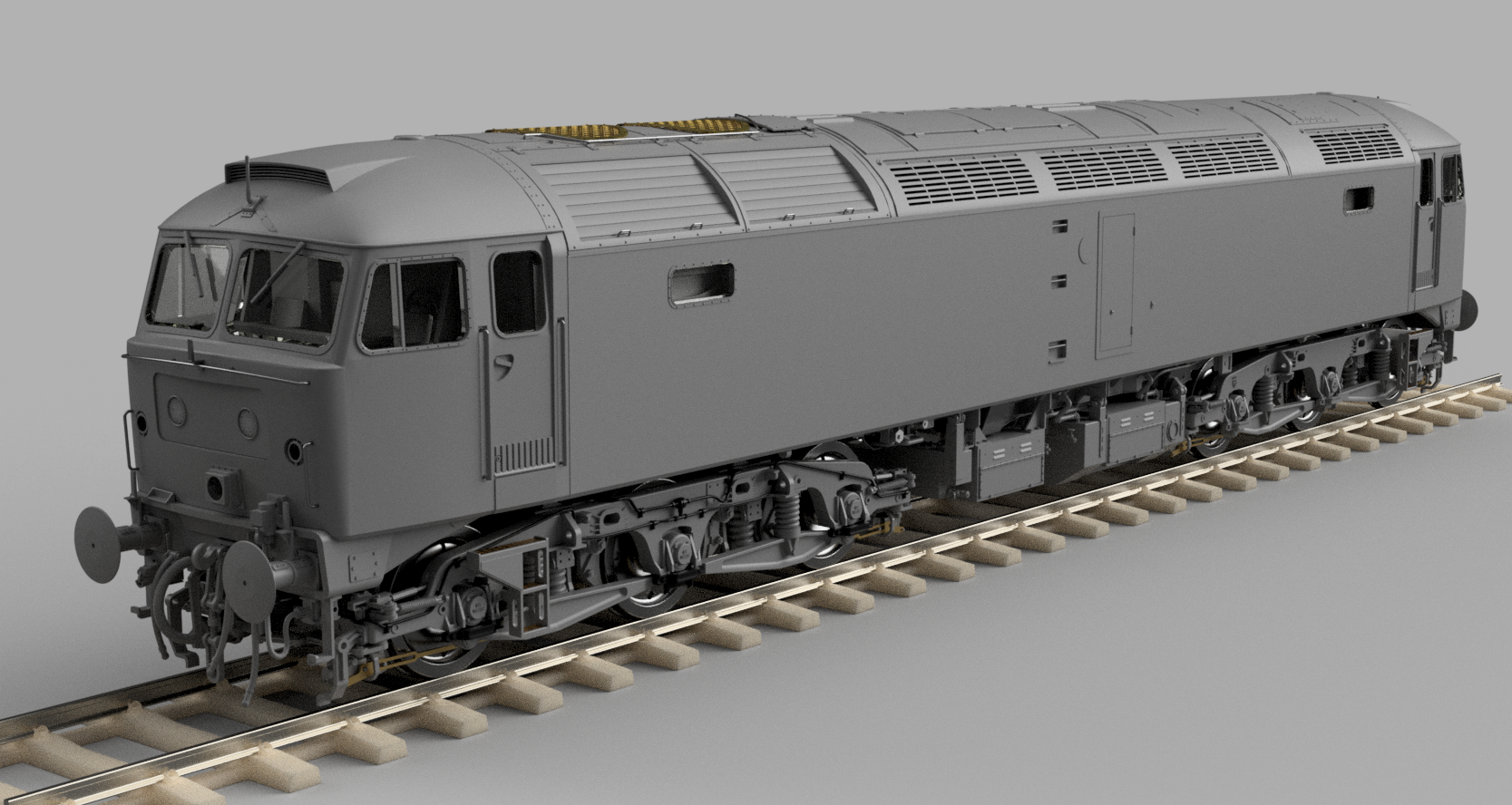
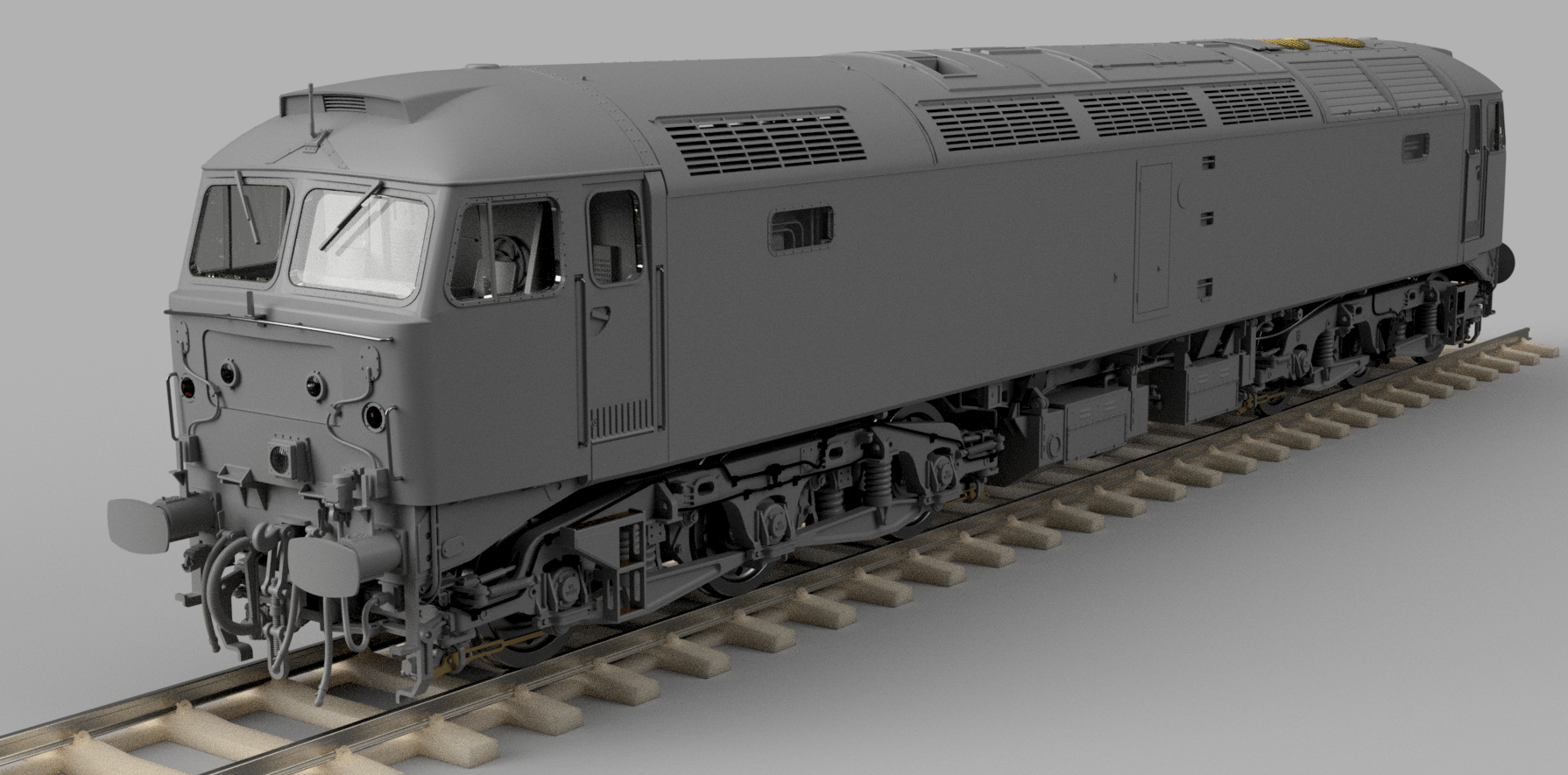










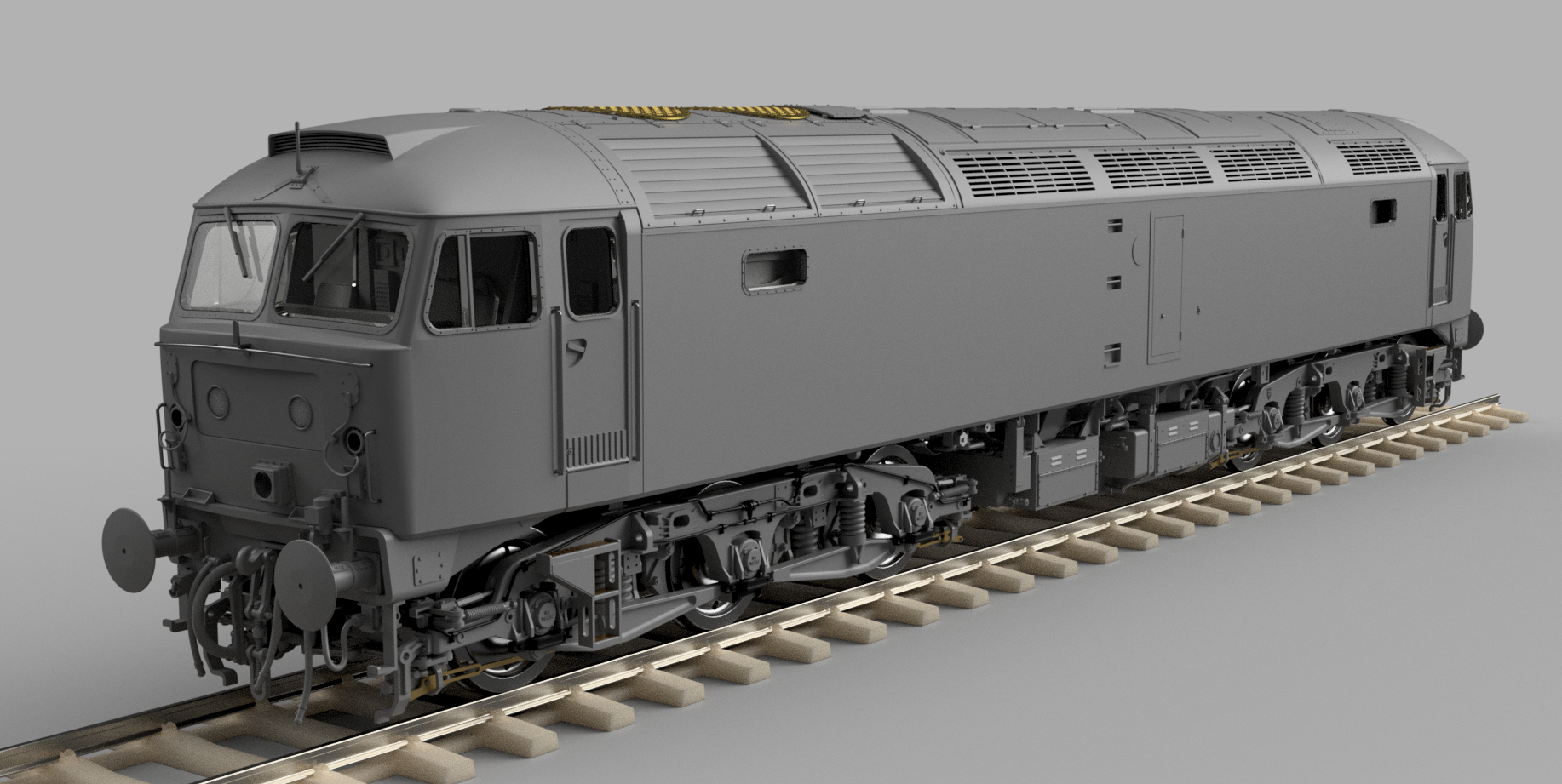



Exclusive models:
Ultimate Model Railways:
47004 – BR Two Tone Green – (CM - 47004 – T T Green)
Rails Of Sheffield/Railway Icons:
47500 – GWR Green – (CM - 47500 – GWR Green)
47798 – Royal Loco - (CM - 47798 - R)
47522 – Apple Green – (CM - 47522 – Apple Green)
47581 – BR Blue - (CM - 47581 - BRB)
D1500 – BR Two Tone Green – (CM – D1500 – T T Green)
Cross-Country Farewell twin pack:
47840 – BR Blue - (CM – 47840/847 - CCFP)
47847 – Large Logo - (CM – 47840/847 - CCFP)
Thanks to Richard Bentley and Wabtec, we have been able to include a few pages from the original Brush Class 47 brochure.
HOW TO ORDER:
Continuing our support of retailers, the Cavalex 47 will be a retail only model, available exclusively from all of our retailers listed below:
AGR Model Railway Store - https://agrmodelrailwaystore.co.uk
Collett’s Models - https://www.collettsmodelshop.co.uk
C&M Models - https://candmmodels.co.uk
John Dutfield - https://www.johndutfieldmodelrailways.co.uk
Rails of Sheffield - https://railsofsheffield.com
Rainbow Railways - https://rainbowrailways.co.uk
Trains4U - http://www.trains4u.com
Ultimate Model Railways - https://ultimatemodelrailways.com
TTC Diecast - https://www.ttcdiecast.com
Cheltenham Model Centre - https://cheltenhammodelcentre.com
Should you have any questions please don’t hesitate to get in touch - cavalexmodels@gmail.com
Alex & Cav







